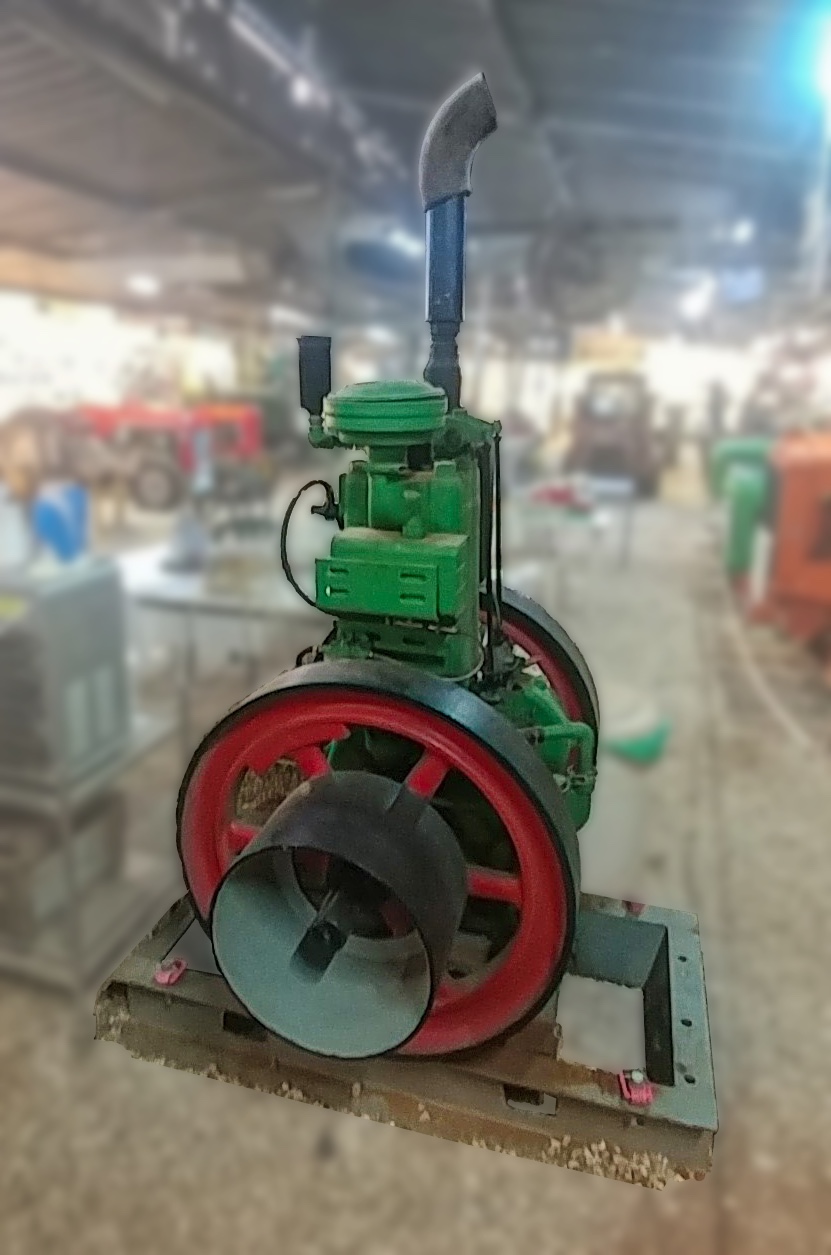Water pump engine, Slavia, 1930
End of the 1930th
One cylinder pump engine from a well in the Samaria region.
SLAVIA story / Amit Ben-shalom
It all started with a 26 year old book seller named Václav Klement, who , when his German made bike broke down, appealed to the manufacturer in a letter written in Czech.
Their short answer arrived promptly and made it perfectly clear that they would not handle an application written in an "unknown language".
Agitated and furious he determined to take "revenge" on the German company by establishing a competing factory.
Together with bicycle manufacturer Václav Laurin he established, in 1895 a small bicycle company named L&K Slavia.
Václav Laurin at this time had just bought a French made bicycle with an assistive engine ("Motocyclette"). The engine on this bike was located on it's front end and activated the wheel by means of a belt. This unsafe contraption caused him an accident in which he lost his two front teeth.
Once recuperating, Laurin made up his mind to manufacture a safe Motocyclette. For this, he turned to the German engine specialist Robert Bush (known to us today as the maker of ignitions systems) and together, in 1899, they designed and built a model with a central engine, safeguarded and suited.
Their success was tremendous and hundreds of motocyclettes were distributed far and wide.
Their models won many races throughout Europe and the copyrights were sold to manufacturers in France, England and more.
In 1900 Václav designed a four wheeled vehicle, of which, starting in 1905, several quite successful models were being manufactured.
The company developed and recruited as head planner Auto Hironimus who had previously been employed at the famous Benz Company.
The company kept growing, acquiring smaller companies, producing various vehicles including busses, tractors, affixed motors (for pumps etc. ) and more all of which had been marketed worldwide.
The First World War and the changes in the Czech Republic in consequence caused a financial crisis in the company. The market for automobiles which were considered a luxury fell into a deep regression and so, the young adaptable company turned to the manufacturing of military vehicles: ambulances, command-cars, busses and tractors for the civilian clientele.
They even went up for a biding on the manufacturing of aircrafts (though they lost that one…)
The competitions established in those days such as Praga, Tatara and more, were making cheaper vehicles more suited for the market. A massive fire which eradicated the factory completely in 1924 wiped out the company for good.
In 1925 the remainders of the company were sold to Emile Skoda, a manufacturer train engines and locomotives and a partner in the Spanish Hispano-Suiza factory for flight-engines.
Future manufacturing, in the reconstructed modern factory, was under the well-known name of Skoda.
The many models build under the holding-company had brought great success in races and competitions.
During the Second World War the factory was confiscated by the Germans forces and compelled to make weapons and military vehicles and well as wings of aircrafts under the supervision of Ferdinand Porsche, who would later design the legendary "Beatle" and founded the infamous Porsche company (but that's a whole other story).
In time Skoda acquired Praga, Tatra and other competitors, finally to be acquired itself by Volkswagen.
A model 'Rapid' engine was used in the first and only Israeli locomotive, the remains of which can be found at Kibbutz Na'an (the rediscovery of this locomotive was taken part by Amit Ben-Shalom, who wrote this piece in it's original Hebrew version as well as a comprehensive study on the subject).
Among the dozens of models manufactured by L&K Slavia / Skoda over the years several carry the name RAPID.
A small engine with a grand story. A vast history in which many great names are intertwined.

